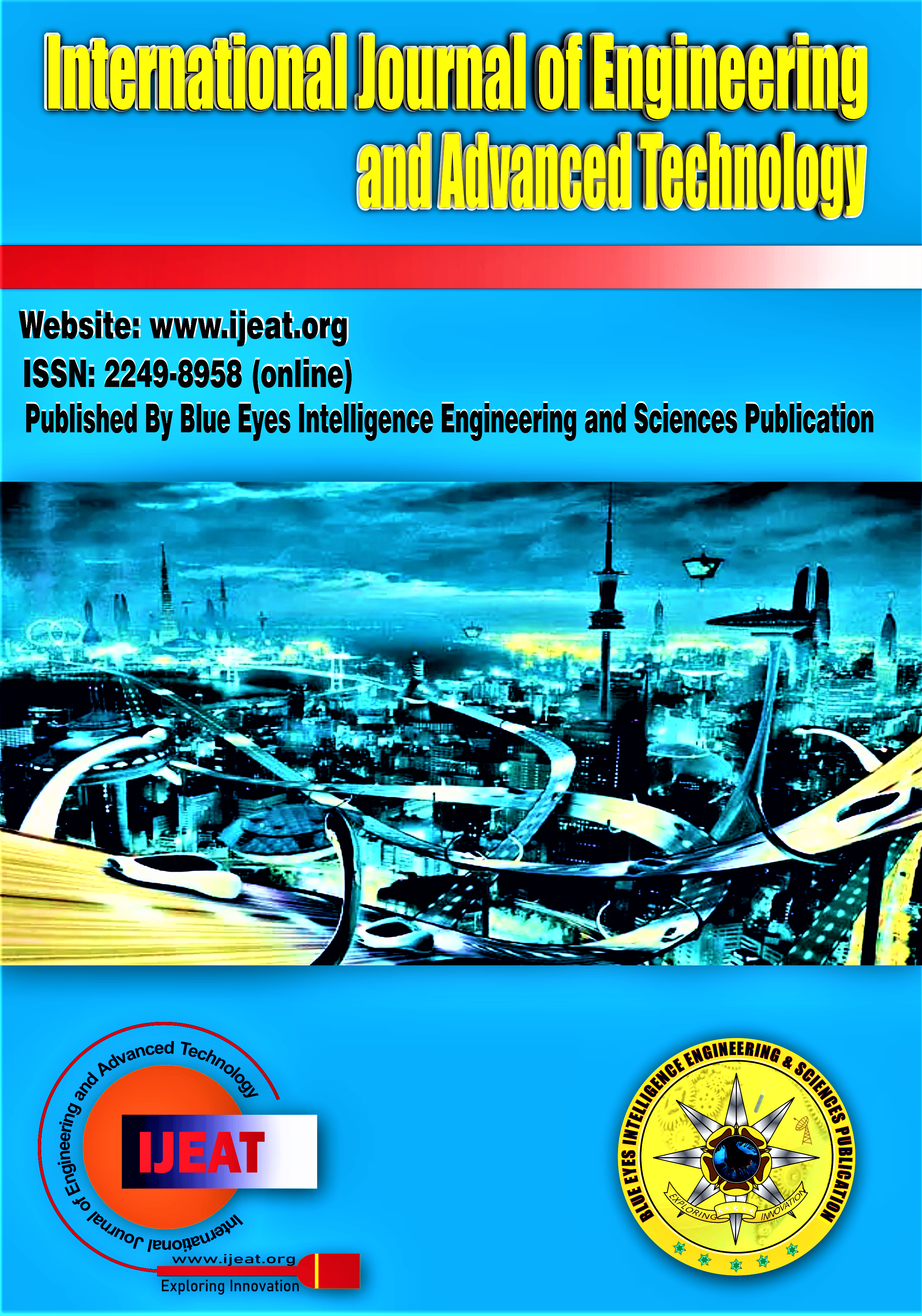Alzheimer Classifications Combining Machine Learning and Signal Processing
Main Article Content
Abstract
Manual detection of presence of Alzheimer even determination of its intensity from Magnetic Resonance Imaging (MRI) image is an easy task when a patient is heavily affected by the disease. The situation becomes cumbersome for a physician when a very mild affected image comes under consideration. For cases involving subtle differences in images, Machine Learning (ML) and Deep Learning (DL) classification are considered the best solutions. In this paper, Alzheimer-affected images of four categories —mild impairment, moderate impairment, very mild impairment, and no impairment — are taken from a benchmark open database. The image set is converted to a numerical feature vector using Speeded-Up Robust Features (SURF), Features from Accelerated Segment Test (FAST), Harris–Stephen’s, and minimum eigenvalue. The feature vector is then applied to several ML algorithms: Fuzzy Inference System (FIS), Multiple Linear Regression (MLR), Fuzzy C-Means (FCM), Naïve Bayes and linear Support Vector Machine (SVM) to check their eligibility in classifying these four types of medical images. The accuracy of detection from any individual method ranges from 56% to 68%. However, applying the maximum voting scheme to all the MLs yields an accuracy of 75%. The long feature vector is also extracted from the discrete wavelet transform (DWT), and classification is done from its coherence, but the accuracy is found to be very poor. Next, the image dataset is applied to the Bag of Features (BoF) algorithm using 500 visual words, yielding a moderate result with an accuracy of 84.28%. Finally, two deep learning models are applied: PyTorch Convolutional Neural Network (CNN) and Keras Visual Geometry Group (VGG) 19. These models are tested on 20% of the trained images, achieving accuracies of 95.7% and 97.1%, respectively.
Downloads
Article Details
Section

This work is licensed under a Creative Commons Attribution-NonCommercial-NoDerivatives 4.0 International License.
How to Cite
References
Sara Evans-Lacko, Elisa Aguzzoli, Dr Sanna Read, Adelina Comas-Herrera and Nicolas Farina, “World Alzheimer Report 2024: Global changes in attitudes to dementia,” Alzheimer’s Disease International, London, U.K., September 2024.
URL: https://www.alzint.org/u/World-Alzheimer-Report-2024.pdf
Chahd M. Chabib1, Leontios J. Hadjileontiadis, (Senior Member, IEEE) and Aamna Al ShehhiID1, “DeepCurvMRI: Deep Convolutional Curvelet Transform-Based MRI Approach for Early Detection of Alzheimer’s Disease,” IEEE Access, Volume 11, pp. 44650-44659, 10 May 2023. DOI: http://doi.org/10.1109/ACCESS.2023.3272482
Ms. Ashwini.S.Shinde and Veena.V.Desai, “Relative Investigation of Machine Learning Algorithms for Performance Analysis on Brain MR Images,” 8th International Conference on Advances in Computing and Communication (ICACC-2018), Elsevier, ScienceDirect, Procedia Computer Science, Volume 143, pp. 552–562, 2018. DOI: https://doi.org/10.1016/j.procs.2018.10.431
Samsuddin Ahmed, Kyu Yeong Choi, Jang Jae Lee, Byeong C. Kim, Goo-Rak Kwon, Kun Ho Lee and Ho Yub Jung, “Ensembles of Patch-Based Classifiers for Diagnosis of Alzheimer Diseases,” IEEE Access, Special Section on Deep Learning for Computer Aided Medical Diagnosis, Volume 7, pp. 73373-73383, June 2019. DOI: http://doi.org/10.1109/ACCESS.2019.2920011
Suhad Al-Shoukry, Taha H. Rassem, (Senior Member, IEEE), and Nasrin M. Makbol3, “Alzheimer’s Diseases Detection by Using Deep Learning Algorithms: A Mini-Review,” IEEE Access, Volume 8, pp. 77131-77141, May 2020.
DOI: http://doi.org/10.1109/ACCESS.2020.2989396
Carmen Jiménez-Mesa, Ignacio Alvarez Illán, Alberto Martín-Martín, Diego Castillo-Barnes, Francisco Jesus Martinez-Murcia, Javier Ramírez and Juan M. Górriz, “Optimized One vs One Approach in Multiclass Classification for Early Alzheimer’s Disease and Mild Cognitive Impairment Diagnosis,” IEEE Access, Special Section on Trends and Advances in Bio-Inspired Image-Based Deep Learning Methodologies and Applications, Volume 8, pp. 96981-96993, June 2020. DOI: http://doi.org/10.1109/ACCESS.2020.2997736
Haibing Guo and Yongjin Zhang, “Resting State fMRI and Improved Deep Learning Algorithm for Earlier Detection of Alzheimer's Disease,” IEEE Access, Special Section on Deep Learning Algorithms for Internet of Medical Things, Volume 8, pp. 115383- 115392, July 2020. DOI: http://doi.org/10.1109/ACCESS.2020.3003424
Amnaya Pradhan, Jerin Gige and M. Eliazer, “Detection of Alzheimer's Disease (AD) in MRI Images using Deep Learning,” International Journal of Engineering Research & Technology (IJERT), Volume 10, Issue 03, pp. 580-585, March 2021.
https://www.ijert.org/detection-of-alzheimers-disease-ad-in-mri-images-using-deep-learning
Vandana B.S. and Sathyavathi R. Alva, “Diagnosis of Alzheimer’s Diseases from MRI Images using Image Processing and Machine Learning Approach,” International Journal of Computer Applications (0975 – 8887), Volume 183, Issue No. 26, pp. 16-22, September 2021. DOI: http://doi.org/10.5120/ijca2021921641
Fazal Ur Rehman Faisal and Goo-Rak Kwon, (Senior Member, IEEE), “Automated Detection of Alzheimer's Disease and Mild Cognitive Impairment Using Whole Brain MRI,” IEEE Access, Volume 10, pp. 65055-65066, 23 June 2022.
DOI: http://doi.org/10.1109/ACCESS.2022.3180073
Marwa EL-Geneedy, Hossam El-Din Moustafa, Fahmi Khalifa, Hatem Khaterb and Eman AbdElhalima, “An MRI-based deep learning approach for accurate detection of Alzheimer’s disease,” Elsevier, Alexandria Engineering Journal, Volume 63, pp. 211–221, August 2022. DOI: https://doi.org/10.1016/j.aej.2022.07.062
K. Horak, J. Klecka, O. Bostik and D. Davidek, “Classification of SURF image features by selected machine learning algorithms,” 2017 40th International Conference on Telecommunications and Signal Processing (TSP), pp. 636-641, 05-07 July 2017, Barcelona, Spain. DOI: http://doi.org/10.1109/TSP.2017.8076064
Y. Choi, D. Kang, J. J. Hwang and K. H. Rhee, “JPEG Compression Detection Based on Edge-Corner Features Using SVM,” 2017 International Conference on Machine Learning and Data Science (MLDS), 14-15 December 2017, pp. 80-84, Noida.
DOI: http://doi.org/10.1109/MLDS.2017.25
M. Acharya, S. Poddar, A. Chakrabarti and H. Rahaman, “Image Classification Based on Approximate Wavelet Transform and Transfer Learning on Deep Convolutional Neural Networks,” 2020 International Symposium on Devices, Circuits and Systems (ISDCS), pp. 1-6, 04-06 March 2020, Howrah, India. DOI: http://doi.org/10.1109/ISDCS49393.2020.9263001
Vijh, S., Gaurav, P., Kumar, S., Bansal, P., Singh, M., Khan, M. A. & Palade, “USMA-BOF: A Novel Bag-of-Features Algorithm for Classification of Infected Plant Leaf Images in Precision Agriculture,” IEEE Robotics & Automation Magazine, vol. 30, no. 4, pp. 30-40, Dec. 2023. DOI: http://doi.org/10.1109/MRA.2023.3315929
S. Kim, H. Wimmer and J. Kim, “Analysis of Deep Learning Libraries: Keras, PyTorch, and MXnet,” 2022 IEEE/ACIS 20th International Conference on Software Engineering Research, Management and Applications (SERA), pp. 54-62, 25-27 May 2022, Las Vegas, NV, USA. DOI: http://doi.org/10.1109/SERA54885.2022.9806734
Prasanthi A. Yavanamandha, Srikiran B. Kavuri, Sai Moulika C. Bedadhala, Vaishnavi D. Chintaparti, and Sindhu E. Kakumani, “Enhanced Lung Disease Detection using VGG and Spatial Transform Network (STN),” Journal of Image and Graphics, pp.24-33, Vol. 13, No. 1, 2025. DOI: http://doi.org/10.18178/joig.13.1.24-33





